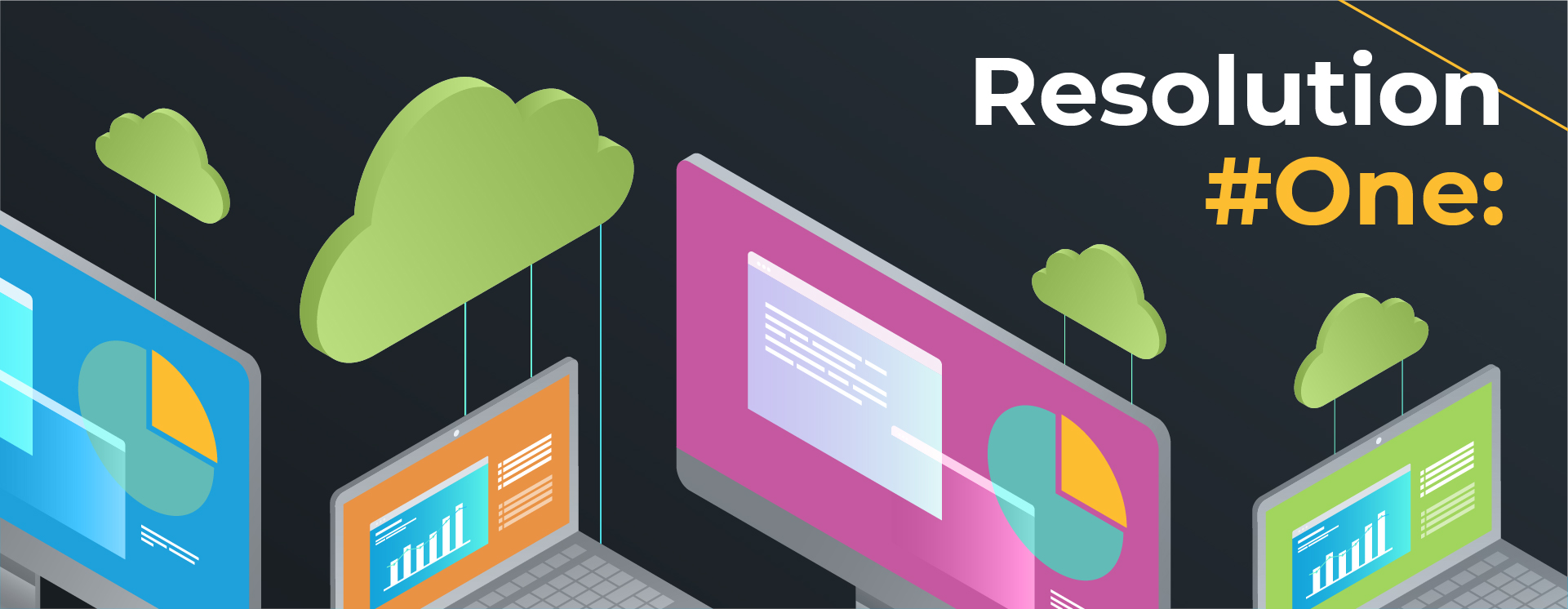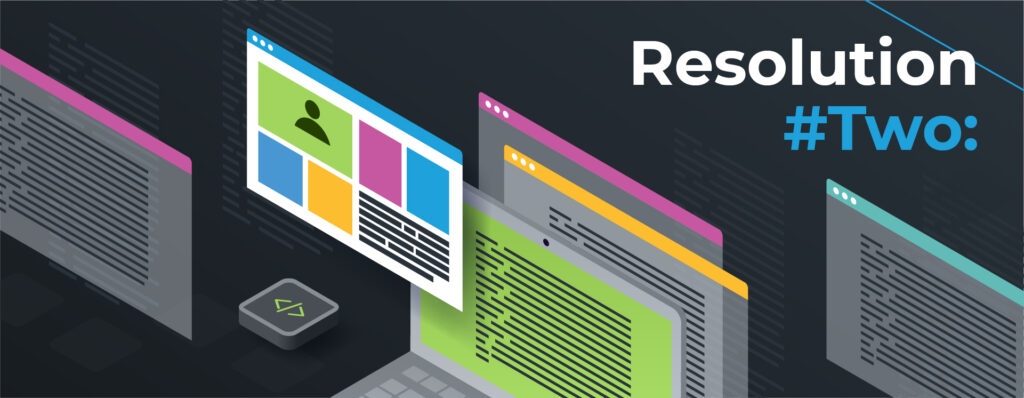In the ever-evolving world of technology, it’s crucial for businesses to stay up to date with new platforms and skill sets in order to remain competitive and efficient. As 2023 kicks off, there are several tech updates your organization should consider implementing in order to stay ahead of the curve.
In this blog post, we’ll explore the top 3 tech resolutions we recommend businesses make this year, including moving to cloud computing, implementing low-code development, and using data storytelling to share complex information.
Resolution #1: Move Your On-Premises Infrastructure to the Cloud

Purchasing, running, and maintaining servers can be an expensive endeavor. For many organizations, moving on-premises infrastructure to the cloud can be a big money saver.
But there’s a lot more to it than just cost savings. A reliable cloud provider can:
- Resize your infrastructure to meet the fluctuating needs of your business
- Protect your data with high-level security
- Provide flexibility in resources
- Minimize downtime
- Reduce time to market and speed of delivery
- Improve stability and performance
Managed services can replace entire components of your applications, further reducing your operating and maintenance costs and giving you more time and resources to focus on your core competencies.
Consulting with a knowledgeable platform engineer is key to your overall cloud strategy. At Kikoda, we use a cloud-first approach, implementing and automating cloud infrastructure along the way. Our certified platform engineers use industry standard practices to implement your cloud transition, making it seamless, simple, and secure.
Resolution #2: Learn More About Low-Code Development

Just like any other industry, new and improved technology can lead to major changes in software app creation. Perhaps the most on-trend phrase in development currently is “low code,” in which nontechnical users can build applications with templates and other tools like AI without having a deep understanding of programming languages.
Low-code development has both its benefits and drawbacks; here are a few tips for understanding it and potentially incorporating it into your own business:
- Trial it first. With so many new players in the market, low code is having a moment and hitting a tipping point of maturity. While it may be tempting to dive right in with a low-code platform, dip just a toe in first by trialing it within your organization.
- Don’t ditch your developers. Low code doesn’t replace your development team, it augments it. Using a low-code platform takes the simpler, routine tasks off your developers’ plates while giving them more time to focus on complex assignments like implementing custom features. Overall, it can make your development team more efficient, agile, and responsive.
- Find the limits. While low code is gaining in popularity, that doesn’t mean it’s necessarily right for your needs. As with other tech platforms, it’s important to fully research low code rather than giving in to the hype. Determine when low code would make sense for your organization and when it would not. You may find that a particular low-code platform is perfect for your needs, or you may choose to implement a blend of high code and low code.
In addition to carefully evaluating your organization’s needs and goals before choosing to go low code, it’s important to consider whether a certain platform will be a smart choice in the long run. Low-code platforms may not offer as much flexibility or control when making changes or adding new features over time.
Resolution #3: Level Up Your Data Storytelling Skills

There’s no denying that data is an excellent (and crucial) tool, but if your audience can’t understand it, they won’t absorb the information.
This is where data storytelling comes in. You have a variety of creative options for presenting complex data in an engaging way that not only informs your audience but entertains them as well. Strong data storytelling helps stakeholders make informed decisions and motivates people to take the action you want them to take.
“Being literate with data and able to explain the stories it reveals is as important a form of literacy as being able to read, write, and speak clearly,” says Miro Kazakoff, an MIT Sloan lecturer who teaches Communications & Data Storytelling as part of the school’s Masters of Business Analytics curriculum.
Here are a few examples of impressive data storytelling:
- Website. Website-based data storytelling takes the slideshow concept to a whole new level. Lusha does an amazing job of this, pairing animated infographics and clean design to make a compelling argument for the need for sales intelligence tools. The site makes it easy for users to share beautifully framed insights via social media or email.
- Video. Well-known statistician Hans Rosling gives us a beautiful example of video combined with animated graphics and his engaging personality to educate his audience on a massive amount of data in a short time. Explaining the same information in words or charts alone would be much less impactful (and far less interesting)!
- Animation. MetaBallStudios’ 3D animation takes a topic that is difficult to envision (in this case, the depth of the world’s oceans) and makes it enjoyable to watch and easy to comprehend. This type of visual storytelling can be used across a variety of topics and industries.
Position your organization for success this year and beyond by ensuring you can effectively meet the challenges of the digital age. Get in touch and let us know how Kikoda can help drive your business forward and further Empower Your IT!
About Kikoda – Kikoda is a client-focused software company providing comprehensive IT services including custom software development, team scaling, cloud and platform solutions (IaaS, PaaS), data analytics, and business intelligence services … just to name a few.